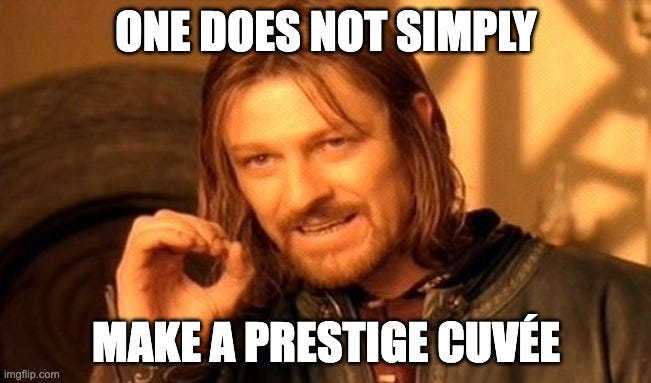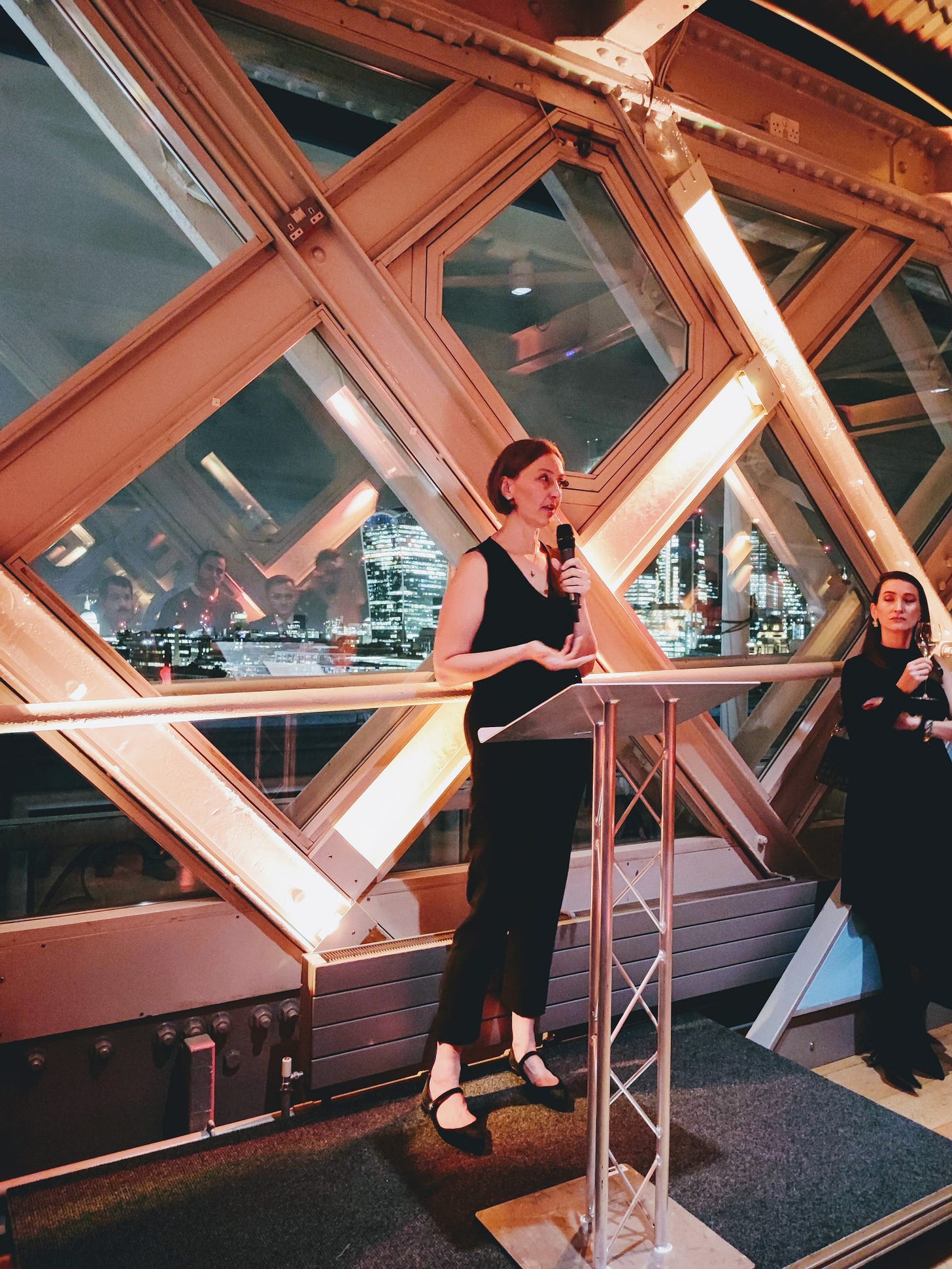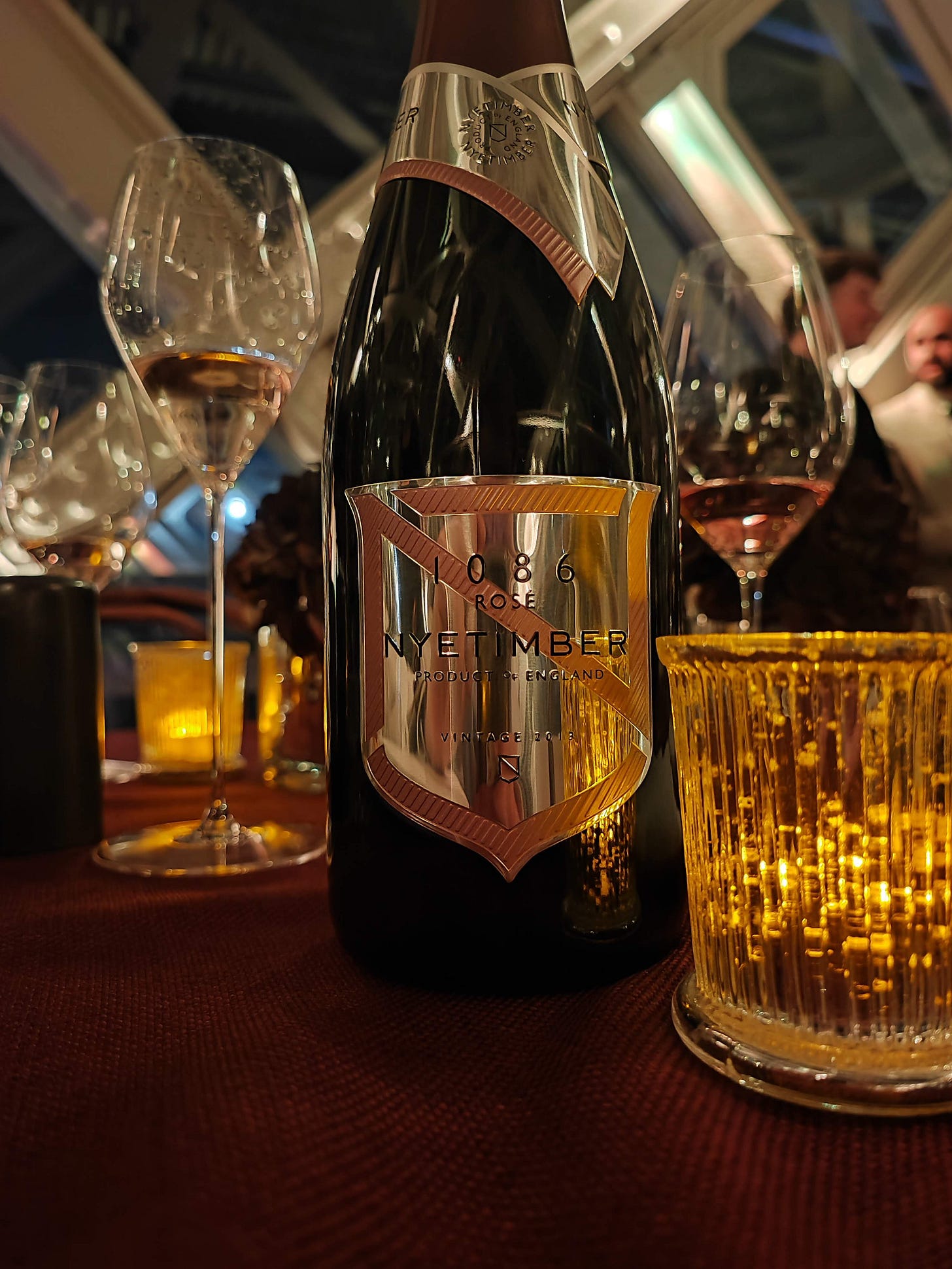Is Nyetimber's 1086 Rosé 2013 their best yet?
The English pioneers step up their Prestige offering.
Nyetimber raised some eyebrows back in 2018 with the release of a pair of Prestige Cuvées costing over £150 from the 2009 and 2010 vintages. It would be tempting to get into all the commercial and strategic angles behind moves like this, but in Nyetimber’s case it probably came down to this:
Why not?
Nyetimber have the vineyards (then centred entirely in West Sussex, but today spread across both the greensand of their home county and the chalk of Kent and Hampshire), the winemaking consistency from husband-and-wife team Cherie Spriggs and Brad Greatrix and, importantly, the resources to be able to buy in to this high stakes game. If anyone can do it, they can.
One could, though, dig out the old Sean Bean meme...oh, OK then:
Seeing as these wines often age for around 10 years, any winemaker could easily be looking at twenty years to get enough tries under their belt to arrive at what they were imagining. Even if the wine develops in bottle exactly how they expect. Even if they really did have the extraordinary base wines they though they did. Even if that blend really was spot-on. No wonder sparkling winemakers often seem so fit and healthy - they need to make sure they’re in good shape to meet their most treasured creations on the other side.
Is the English high-end worth exploring?
Yes, if you don’t think about the money too much - I am a huge Gusbourne fan, but didn’t feel as though the £195 2014 51’N was quite right, yet (better to plump for terrific Magnums of the standard bottlings, or indeed the Single Vineyard wines). Chapel Down’s straight Kit’s Coty Blanc de Blancs is hard to argue with over the £120 ‘Couer de Cuvée’ bottling, at least for me. Special releases, such as Squerryes’ Late Disgorged Vintage, Nyetimber’s own late releases of magnums of Classic Cuvée (available on their website) and Ridgeview’s Blanc de Blancs Magnum (currently from 2009) can be extremely good, as can Sugrue’s ‘Cuvée Brendan O’Reagan’ in a different style ( a late release of ‘The Trouble With Dreams’. *
It’s a small, young field squaring up in the £150+ game against the likes of Dom Pérignon, Krug and hip growers (let’s not pretend that English Prestige Cuvées live in a commercial vacuum, even if stylistic comparisons are not helpful - champagne is likely to be even more squarely front-and-centre in buyers’ minds at this price than at £35). Battles worth fighting?
Perhaps not battles, but conversations worth being part of. I rated Nyetimber’s 1086 2010 and Tillington Single Vineyard 2013 the top two Brut blends in the first (2021) Tim Atkin England Special Report. They were tasted blind, too (with thick enough bottle jackets not to be able to see the slightly gaudy embossed shields poking out). Scores were 94 and 93 respectively (and 93 for the 1086 2010 in the 2022 report).
The initial rosé release seemed to have lost a shade of brightness by 2022, so it certainly seemed high time for a new vintage. Nyetimber obliged with an impressive sense of occasion, with owner Eric Hereema present to show off a wine the team clearly have considerable confidence in to a room-full of trade and press atop Tower Bridge last week.
“The selection of wines for 1086 are done by taste, not by recipe or requirement to always include a specific vineyard parcel…we want to choose the best by taste, and nothing else. We also take into consideration when selection the base wines that the wine is going to be judged on its quality alongside its international peers, and it must pass the test of being able to age for many years”
Cherie Spriggs, above
1086 2010 was served first, in 75cl. It’s 45% Chardonnay, 44% Pinot Noir and 11% Pinot Meunier, launched in September 2019. The 2010 feels very mid-window for drinking now: what I love about Nyetimber is the delicacy and precision of the fruit, and it’s still holding its line against some of the sweet-natured, caramelising butterscotch and dairy (almost marshmallow) side that comes with age here, together with that gentle sort of turn away from floral-fresh to air-drying citrus, stickier fruits, nougat. How much age to give it is more of a question of where you want that line to be - for my taste I’d open the bottles and enjoy the brightness.
1086 Rosé 2013
“Temperatures in 2013 were cooler than average resulting in a later bud burst. July was warm and dry, so we had a wonderful fruit set. Then we had moderate conditions from August onwards which enabled the fruit to ripen slowly…the harvest began on October the 8th….So we had a season where the development of the fruit was quite slow and gentle and the flavours were very delicate, quite unique from other vintages…The wines simply took longer than normal to reveal their characters to us.”
Cherie Spriggs, Head Winemaker
Nyetimber go for quite a large red wine addition (14% here), although you wouldn’t necessarily feel that; in Champagne a 14% red wine addition could yield quite a dark, tannic, boisterous style, but Nyetimber must run their red wine ferments with kid gloves and hushed voices (probably what English fruit needs); there’s colour and fragrance, but little in the way of grip or weight.
The 2013 has already spent 3.5 years on cork, which seems a lot; Spriggs explained that with the “delicacy and the lightness that we had in the wine, the lees flavours reached a lovely intensity around the six year mark”, hence the disgorgement in 2020. “A little bit like the harvest, we found this post-disgorgement time really necessary for the fruit flavours to unfurl”.
It’s worth remembering, too, that 3.5 years ago we were all rather preoccupied and possibly not feeling much like drinking £175 sparkling wines. Maybe releases like these need the right moment not only on the wine’s terms, but on ours too? The 2013 rosé is currently available for £175 from Nyetimber’s website (which is also the source of a few choice direct-from-the-cellar finds, such as the 2010 Classic Cuvée magnums).
Commercial considerations aside, the 2013 is a wine that ticks so many of the boxes for a fine rosé, playing between fresh, vivid, squishy red fruit and something a little more dried-out and intriguing (poached strawberries, dried hibiscus, those nice hedgerow jellies you get at farm shops, all at once). There’s enough of a citric squeeze to stop the Pinot Noir running the whole show, to pull on its coat tails and make it sit up straight, there’s lurking richness of dried apples, brown pastry and cream. The texture is calm and even-tempered with this extra time on cork, still cooly-crisp but gliding through from start, to that succulent mid, to that citric close without any drama.
Despite the year it’s not a taut or demanding wine, but a gentle-natured charmer. Maybe when more of the chalk sites come into the blend the style will put on a steelier gaze? Let’s see - in short it’s the best 1086 yet, promising plenty (surely not-too-distant) release of the white edition.
*What I have observed in older English Sparkling Wines- and this may be rather tecchie, apologies - is that there is a risk of the wines getting a rather sweet-sour profile, stuck between lime-cordial ageing Chardonnay, hay/straw\honey maturity, detaching acidity and what could be the effects of quite particular malolactic fermentation dynamics (high lactic acid levels) bringing quite pronounced popcorn/butter/cheesy and savoury notes with some oxidative ageing and dosage. The stuffing falls out a little, the prevalence of acidity over structure becomes apparent, and the biological flavours of process can take over. It’s not just England, of course - look at Franciacorta, Central Europe, Australia and New Zealand and you’ll often find that ‘Prestige’ offerings don’t always suit the extended ageing bestowed on them. A good puzzle to solve for England; high-end sparkling wine doesn’t have to mean a decade on lees! (The decision to take 1086 rosé 2013 off the lees at 6 years is a great example)








Interesting write-up and I look forward to tasting it. Also interesting that it’s been on cork for so long. What have they been waiting for? Do they think its reached its peak now and its not going to get any better? If I am buying expensive wine, I want it to have a good few years life left in it and hopefully get even better with time..
I was lucky enough to taste the 2010 last week at a sparkling wine tasting and thought it was a very nice wine. I am not sure In would spent that amount of money on it though, as it is a bit out of my usual price range. Very grateful for the opportunity to taste it though.